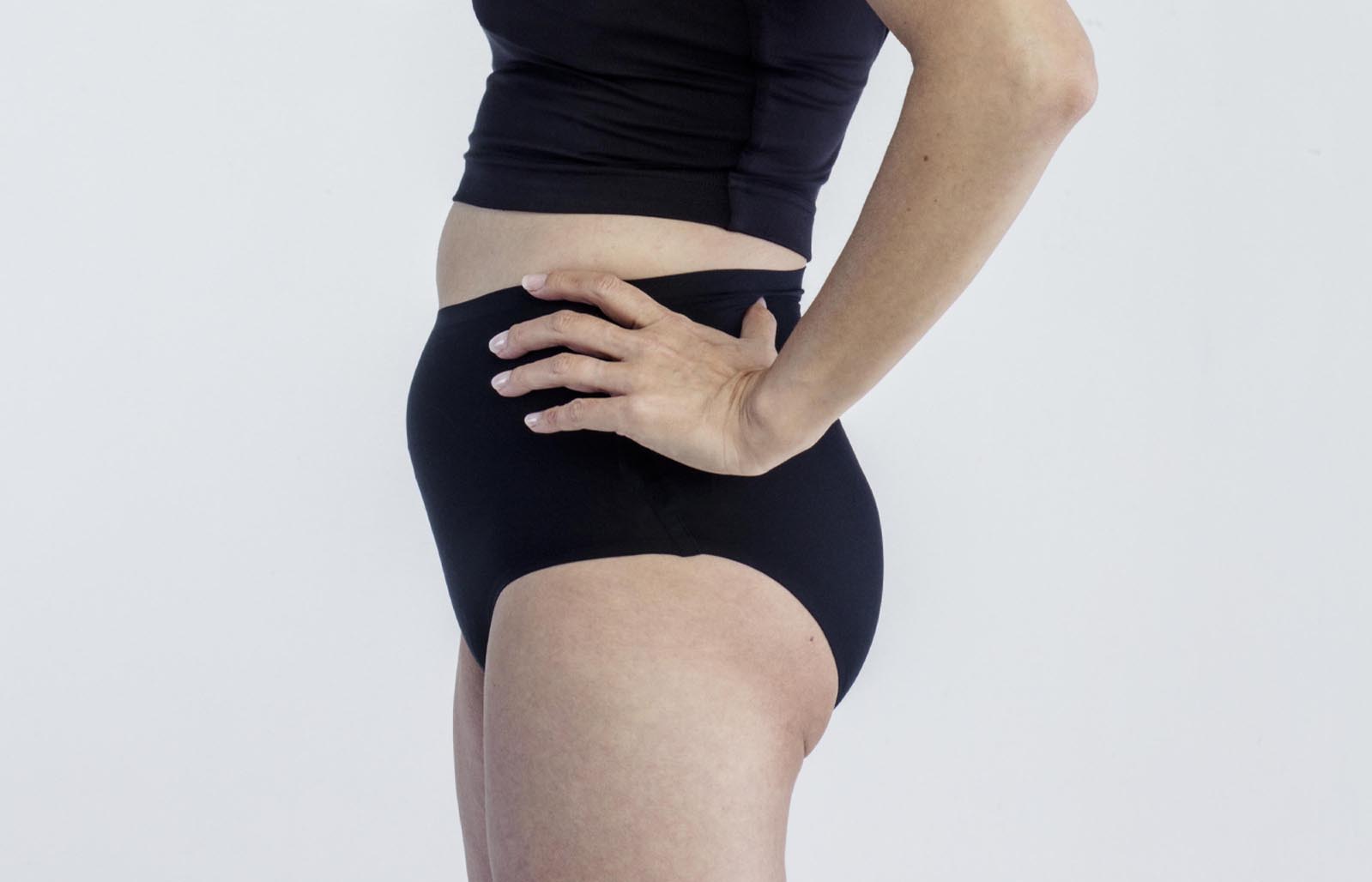FemiLift by Alma Lasers is a nonsurgical vaginal rejuvenation treatment. It uses fractional CO2 laser energy—the same laser technology used for skin rejuvenation—to create microinjuries along the vaginal walls. This stimulating the body’s natural healing response, which in turn treats vaginal dryness and stress urinary incontinence, thickens the skin, and restores elasticity.
As women age, vaginal tissues lose their elasticity as the collagen and elastin fibers that give the skin structure and flexibility begin to break down.
Our bodies naturally produce less new collagen and elastin starting in our 20s, with levels decreasing about 1% per year. Menopause accelerates that loss, with collagen levels dropping 30% in the first five years and 2% more every year after that. Many women develop vaginal atrophy, which can negatively impact their vaginal health and quality of life.
FemiLift aims to improve lubrication and tissue integrity, reduce stress incontinence, and offer mild tightening benefits.
These changes translate into “a significant improvement of sexual function and satisfaction with sexual life in postmenopausal women” with vaginal atrophy, according to a study published in 2015.
Pros
- FemiLift can increase lubrication, restore elasticity, and treat urinary stress incontinence.
- A reduction of urinary urgency, urinary frequency and moderate forms of incontinence means that many patients are able to stop using bladder medication and urinary pads.
- It’s an effective way to improve quality of life for many women.
- FemiLift treatments shouldn’t be painful. The laser creates micro injuries that are usually well-tolerated by the nerves in vaginal tissue. “I have performed hundreds of FemiLift treatments in the past eight years and have never given a single pain medication,” says Dr. David Ghozland, an OB-GYN in Los Angeles, California.
Cons
- You’ll need an initial series of three treatments, which can get expensive.
- Results aren’t permanent: you’ll need a maintenance procedure every 12 months.
- It doesn't work for some. While the majority of RealSelf members say FemiLift is “Worth It,” those who found it “Not Worth It” say they didn’t experience an improvement in vaginal laxity or sensation. Some also experienced pain during or after the procedure.
- Burns are a potential risk (with an inexperienced provider), though they happen very rarely.
- Average Cost:
- $2,813
- Range:
- $1,250 - $4,000
Your FemiLift cost will depend on your provider’s level of experience, their practice location, and how many treatment sessions you have.
Your physician will have you lie on an exam table with your feet in stirrups. First, they’ll perform a vaginal exam and make sure you have no signs of active infection. Any infections they find will need to be resolved before your treatment.
Once you’re cleared for treatment, here’s what you can expect:
- Your provider will insert the tubular FemiLift laser probe into your vaginal canal.
- The probe rotates 360 degrees, delivering bursts of heat into the vaginal mucosa.
- The provider will slowly move the laser to cover the entire vaginal canal. The whole procedure lasts about 15 minutes.
While some reviewers on RealSelf say it was very uncomfortable, doctors say you should feel no pain, only a mild pressure at the time of insertion and some heat as the probe comes closer to the vaginal opening.
You won't need downtime from most of your normal activities after a FemiLift procedure.
Just avoid baths, swimming, and hot tubs for the first four days and steer clear of tampons and vaginal sexual intercourse for five days, to allow yourself time to heal.
The science behind FemiLift is sound: thermal energy from the CO2 laser heats the vaginal tissues, triggering a healing response that stimulates new collagen production, mildly firms tissues, and restores their elasticity and lubrication. Firmer tissues theoretically provide better bladder support to help reduce stress incontinence.
In FemiLift reviews on RealSelf, 91% say it was “Worth It,” and research appears to back this up:
- A 2015 study concluded that fractional CO2 lasers like FemiLift “can produce a remodeling of vaginal connective tissue, without causing damage to surrounding tissue.”
- Another study published in 2018 showed that an increase in collagen caused “the vaginal wall to become thick and tightened.”
That said, how well it works will depend on the severity of your concerns. Laser vaginal tightening can mildly firm vaginal tissue, but it can’t tighten muscles or fascia. If you have serious vaginal laxity (a feeling of looseness), you won’t be a good candidate for FemiLift: treating that will require surgical vaginoplasty or perineoplasty.
“When the vagina loosens after childbirth, it's the muscles that have loosened,” explains Bayonne, New Jersey, OB-GYN Dr. Marco Pelosi. “Procedures such as vaginoplasty and pelvic floor reconstruction are designed to fix the damage, tighten the muscles, and tighten the skin in order to create a long-lasting and effective solution.”
Portland, Oregon, OB-GYN Dr. Richard Rosenfield notes that “lasers such as FemiLift are a wonderful option for patients not interested in undergoing surgery, but they will not work as well as surgical intervention. For patients with mild to moderate laxity and no significant pelvic organ prolapse, we have seen significant improvement.”
FemiLift is not a suitable treatment for those with connective tissue disorders or anyone taking blood thinners or other drugs known to interfere with healing.
You should notice a difference after the first two treatments in a series of three, spaced four to six weeks apart.
It takes time for collagen production to ramp up, so the benefits can become apparent.
The FemiLift photos in our gallery have been shared by the provider who performed the procedure, with the patient's consent.
Improvements in vaginal tightening and elasticity could last two to three years. The benefits for urinary incontinence are shorter-lived—about 12 months. Doctors recommend doing an annual maintenance treatment to keep up your results.
The FemiLiftPixel CO2 fractional laser system is considered safe in the hands of an experienced, board-certified gynecologist or other qualified doctor.
The most common side effects are mild:
- It's common to feel some cramping for the first few hours after your treatment.
- Some patients have vaginal spotting or a watery discharge, as cells slough off after being damaged by the heat of the laser. It’s a good idea to wear a pad for the first day post-treatment.
The safety of all laser and energy-based devices like FemiLift is controversial. While they have FDA clearance for treating some gynecological and feminine health concerns, they're not specifically FDA cleared for vaginal rejuvenation.
In July 2018, the FDA released a statement warning patients about deceptive claims surrounding vaginal rejuvenation devices and cautioning consumers about potential risks, including scarring, burns, and painful sexual intercourse.
It reads, “As part of our efforts to promote women’s health, the FDA has cleared or approved laser and energy-based devices for the treatment of serious conditions like the destruction of abnormal or pre-cancerous cervical or vaginal tissue, as well as condylomas (genital warts). But the safety and effectiveness of these devices hasn’t been evaluated or confirmed by the FDA for ‘vaginal rejuvenation.’ In addition to the deceptive health claims being made with respect to these uses, the ‘vaginal rejuvenation’ procedures have serious risks.”
New York City–based plastic surgeon Dr. Lara Devgan says that while “the laser and energy vaginal devices in question have not been FDA-approved for the claims that are frequently made about them, they work well anecdotally and in clinical practice.”
While serious complications appear to be rare, there have been isolated reports of FemiLift complications like burns. One RealSelf member also reported pain in her vaginal canal for months after her procedure.
Since the FDA alert in 2018, a number of small studies have been conducted demonstrating the benefits of devices, like FemiLift.
- A 2022 paper found the PixelCO2 laser to be safe and effective for treating stress urinary incontinence (SUI).
- Another reported that three monthly sessions significantly improved SUI symptoms.
- A 2021 study in a urology journal saw several cases of mild to moderate urinary incontinence resolve or improve within three to six months, following a series of three FemiLift treatments, with no adverse reactions.
- A separate trial looking at FemiLift for treatment of SUI followed subjects for a full year following three treatment sessions and showed improvements up to 12 months, with no serious side effects.
As with all laser treatments, choosing an experienced provider with a track record of positive patient reviews may Your FemiLift provider should explain all potential risks during your initial consultation.
While FemiLift is a CO2 laser treatment, ThermiVa uses radiofrequency energy to gently heat the vaginal tissues and the vulva.
Similarly to FemiLift, this stimulates a regenerative healing response that boosts collagen and elastin production as it increases blood flow.
The major differences between these procedures stem from the fact that ThermiVa is nonablative, meaning that it heats only the subdermal layer so there’s no injury to the skin’s surface. This means that:
- ThermiVa treatment may be more comfortable
- it comes with absolutely no downtime
- it carries a lower risk of side effects
ThermiVa also works on both the internal and external vaginal tissues, whereas FemiLift directs all of its energy inside of the vaginal canal. That means that ThermiVa can also firm and rejuvenate the vulva, including the labia.
Vaginal rejuvenation treatment options abound. Along with FemiLift, these are some of the most popular with RealSelf members.
MonaLisa Touch also uses a fractional CO2 laser to stimulate both the surface and deep tissues of the vagina, promoting collagen production. It has similar benefits for restoring lubrication and elasticity, and an initial series of three sessions is recommended.
A 2020 multicenter study comparing the efficacy and safety of this fractional CO2 laser with that of topical estrogen for the treatment of genitourinary syndrome of menopause (GSM, a.k.a. vulvovaginal atrophy) concluded that the improvement in GSM symptoms—including vaginal burning, dryness, and painful intercourse—seen with the laser was comparable to that seen with topical estrogen therapy and that the symptom abatement lasted for at least 6-12 months post-treatment.
Geneveve by Viveve pairs the heat produced by radiofrequency (RF) energy with a cooling cryogen tip for comfort, in a treatment that’s intended to tighten vaginal tissues, increase moisture, and reduce urinary stress incontinence. It can also be used externally, to improve the appearance of the labia majora. The heat stimulates production of collagen and elastin beneath the skin. You’d need one treatment session, lasting less than an hour.
Votiva is a radiofrequency energy treatment that uses two handpieces—the FormaV, primarily for internal use, and FractoraV, for external use. The heat creates controlled microdamage that triggers your body’s natural healing process, prompting faster cell turnover and more blood flow to the area. The tissues tighten and nerve signaling is restored, for improved sensation and lubrication. Doctors recommend three treatments, spaced one month apart, for best results. Each treatment session lasts 30 minutes.
diVa delivers two laser beams at once to the wall of the vaginal canal, to help tighten and increase lubrication. The first laser deeply resurfaces the tissue; the second heats the deeper layers to stimulate new collagen production. Three treatments, spaced four to six weeks apart, are recommended.







